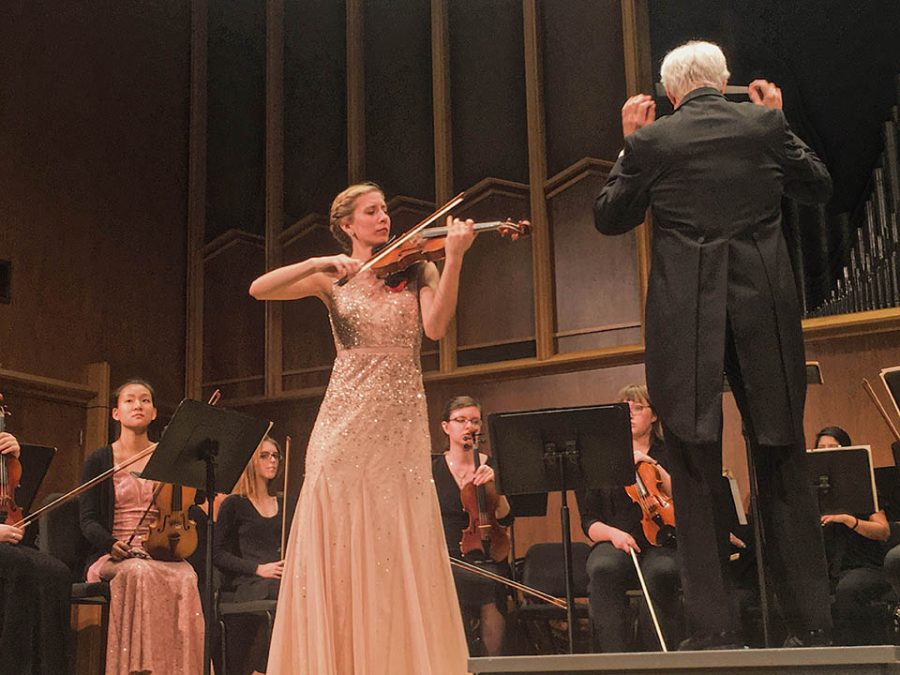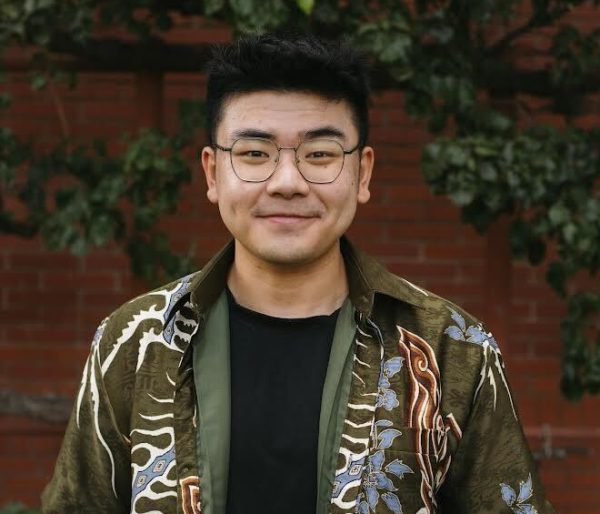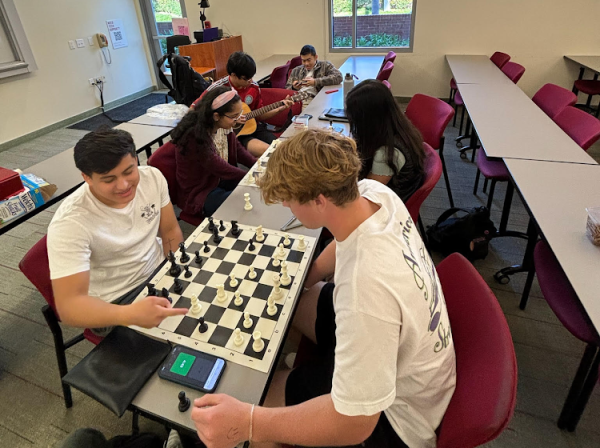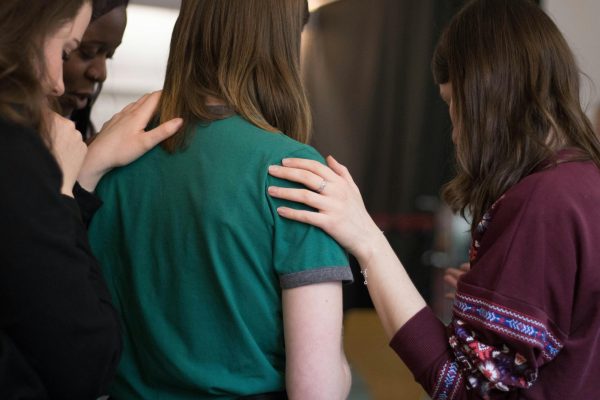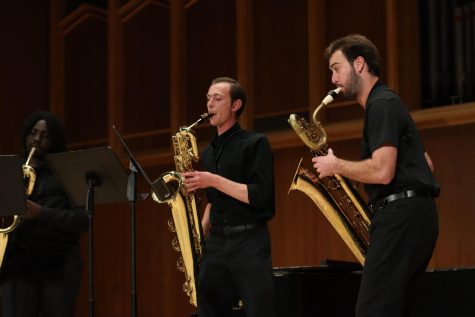Biola’s Symphony Orchestra takes listeners on a journey
Many cultures, styles and emotions exude through the performance of eight concerto pieces.
April 11, 2017
“The orchestra loves to play this concerto concert because we are required to be almost a chameleon-type personality,” said Marlin Owen, associate professor, area coordinator and conductor in the Biola Conservatory of Music. “Every composition requires a completely different set of aesthetics — a musical aesthetic, a cultural aesthetic and a technical aesthetic.” Indeed, no one could have fully prepared for the multifaceted rollercoaster of emotion that awaited them when conservatory musicians filed into Lancing Recital Hall and began tuning.
Welcome unpredictability
The Biola Symphony Orchestra went straight for the jugular with Ludwig van Beethoven‘s “Piano Concerto No. 1 in C Major, Op. 15.” Adhering to the bombastic, almost bipolar nature the composer maintains a reputation for, this piece did a perfect job of setting a tone of welcome unpredictability. The audience sat transfixed from the first note, and they applauded uproariously before the last note’s echo died out.
Jessica Stein, senior music performance major, carried the night on with a beautiful rendition of Antonin Dvořák’s “Romance for Violin in F Minor, Op. 11.” With perfect support from the lush orchestra, her elegant delivery encompassed power and delicateness all at once. Stein pulled the audience through this wondrous juxtaposition with apparent ease — a going theme throughout the evening, even in more strange passages.
A transformative direction
The performance of Frank Martin’s “Ballade for Flute, Piano and Strings” saw Alyssa Miller, sophomore music performance major, take her instrument in a transformative direction. While certainly hair-raising, her use of atonality and 12-tone arrangements took full advantage of the flute’s potential past its delicate and fluttering exterior. Her ferocious musical soliloquies pierced hearts, but maintained a gentle undercurrent that ultimately allowed listeners to maintain their wits while becoming immersed in some alien textures. All of the instrumental-orientation left the crowd speechless, but the vocal performances elevated the concert’s emotional impact into the heavens.
Two soprano vocalists — Laurel Coddington, sophomore communication disorders major, and Tamara Beliy, senior music performance major — graced the hall with their distinct performances. Coddington’s singing took a more innocent and strident path, evoking a more playful side of romance in “Que fais-tu” from “Romeo and Juliet” by Charles Gounod. While certainly powerful, her voice maintained a pleasant sweetness that seemed to exude naturally from her mannerisms on stage. By contrast, Beliy exuded believable anguish through Giacomo Puccini’s “Vissi D’arte.” Her rafter-shaking singing was truly a staggering experience. The crowd could hardly contain themselves as her rapturous vibrato and the orchestra’s transcendent modulations solidified this as the evening’s most memorable piece.
This concert delivered what it promised — an incredibly diverse array of compositions performed with equal precision, highlighting a distinct set of emotional and cultural backdrops. Whether it be Beethoven’s robust beginning or Chopin’s eruptive closing sentiments, the genuine passion and love for higher art translated from the musicians to the audience. While one could hardly expect to have his or her heart and mind filled with such an array of beauty, no one left that room unmoved by the glorious fruits of the Biola Symphony Orchestra’s labor.


